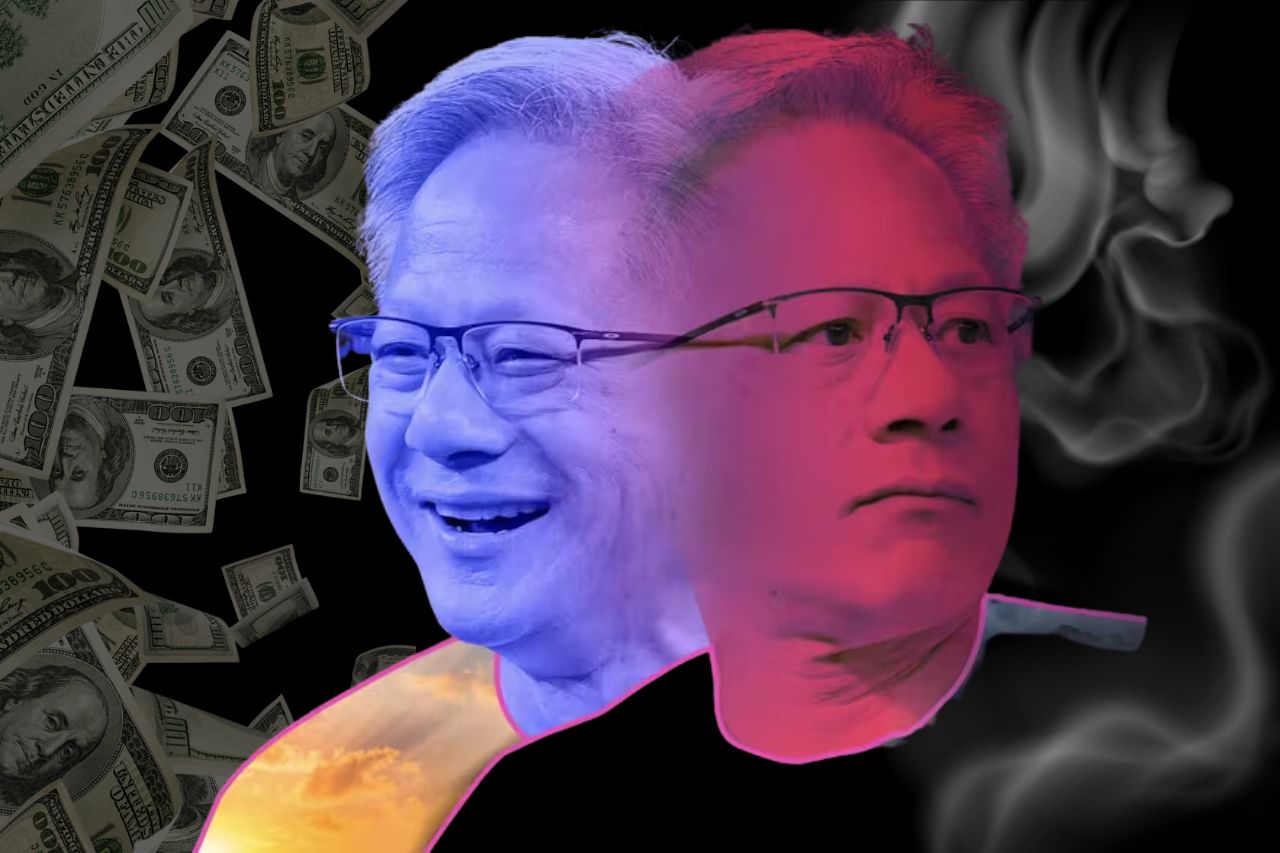Few figures in the high-stakes world of technology are as dominant as Nvidia’s charismatic CEO and co-founder Jensen Huang. Under his direction, Nvidia has grown from a small-scale graphics card maker to a major player in the computer sector, spearheading advancements in data centres, gaming, and artificial intelligence (AI). In 2023, Huang’s company’s market valuation is expected to surpass $1 trillion, securing his position atop the tech hierarchy. Huang’s worries about the future, nevertheless, imply that even the most powerful leaders cannot afford to get complacent despite his enormous achievements.
The Meteoric Rise of Nvidia
Huang’s imaginative leadership has enabled Nvidia to transform from a graphics processing unit (GPU) specialist into a diversified tech titan. When it was first founded in 1993, Nvidia concentrated on creating GPUs for professional and gaming visualisation. But Huang was quick to see that GPUs could be used for more than just graphics, especially with regard to parallel computation. Because of its foresight, Nvidia was able to play a major part in the AI revolution by making its GPUs the go-to hardware for training intricate neural networks.
The business has reaped significant rewards from its strategic shift towards AI. These days, Nvidia’s GPUs are essential to a huge range of applications, including cloud computing and driverless cars. The development of AI-driven technologies has propelled Nvidia’s expansion, resulting in record-breaking sales and a high stock price. With a notable increase from prior years, Nvidia’s quarterly revenues in 2023 surpassed $13 billion, highlighting its leading position in the market.
The AI Gold Rush
Without a doubt, the highlight of Nvidia’s business story has been the AI surge. Many AI workloads, particularly those operated by internet behemoths like Google, Amazon, and Microsoft, rely heavily on the company’s GPUs. Huang has strengthened Nvidia’s position in this emerging industry with his calculated investments in AI startups and alliances.
Specifically, the emergence of generative AI has given Nvidia new opportunities. Technologies that are revolutionising industries and driving an unprecedented demand for processing capacity include Google’s Bard and OpenAI’s ChatGPT, both of which mostly rely on Nvidia hardware. Nvidia will benefit greatly as artificial intelligence continues to spread throughout industries, including healthcare and finance.
Clouds on the Horizon
Huang is cautious about possible obstacles despite Nvidia’s commanding market share and the expanding need for artificial intelligence. His circumspect approach is influenced by various causes.
Competitive Pressure
The AI market’s explosive growth has drawn a large number of rivals, including both established firms and startups. Firms like as AMD and Intel are making noteworthy advancements in GPU technology, whilst startups like Graphcore and Cerebras are creating cutting-edge hardware tailored to artificial intelligence. The growing rivalry may reduce Nvidia’s profitability and market share.
Geopolitical Tensions
Another major risk to Nvidia’s business is geopolitical developments. Global tech companies are operating in an unpredictable climate due to the ongoing trade tensions between the United States and China. Since China is one of Nvidia’s biggest markets, any tightening of trade restrictions or the imposition of sanctions may have an effect on the company’s supply chain and sales.
Technological Evolution
Innovation in the tech sector happens quickly and frequently in disruptive ways. Even while Nvidia is now leading the way in AI hardware, emerging paradigms or technologies, like quantum computing, have the potential to replace the AI architectures that are in use today. It takes constant innovation and significant investment in research and development to stay ahead in such a turbulent environment.
Ethical and Regulatory Scrutiny
Artificial intelligence (AI) technologies are becoming more widely used, and this is putting them under more ethical and legal scrutiny. Policymakers from all around the world are becoming more interested in topics like algorithmic bias, data privacy, and the social implications of AI. Tighter laws may result in higher expenses and operational difficulties for AI-driven businesses like Nvidia.
Huang’s Strategic Vision
Huang’s strategic ability and long-term vision are evident in his awareness of these problems. He is actively looking for methods to reduce risks and maintain Nvidia’s growth trajectory rather than sitting back and taking it all in. This entails broadening Nvidia’s product line, making investments in cutting-edge technology, and entering new markets.
Huang is also encouraging Nvidia to have a culture of ongoing innovation. The company is pushing the limits of what is possible with GPU and AI technology with its large investments in R&D. In a business that is changing quickly, Nvidia wants to preserve its competitive advantage and flexibility by being on the cutting edge.

